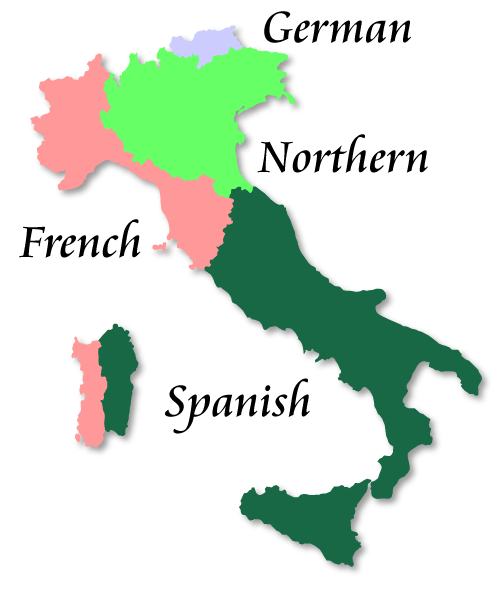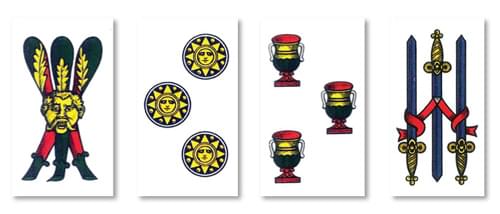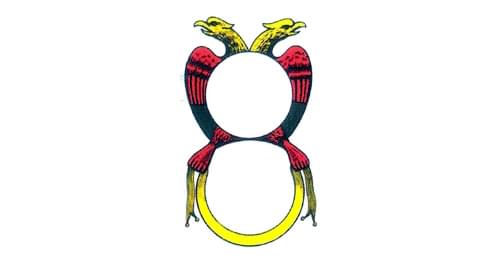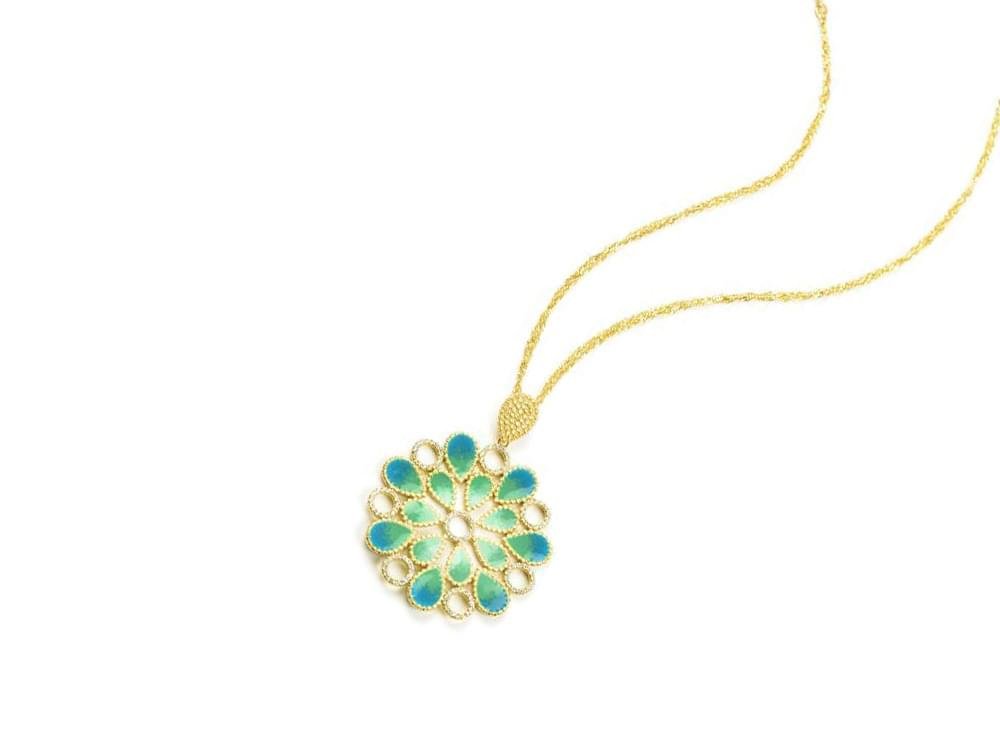
Playing cards were probably introduced to Italy by the Moors during the late 14th century. There are documents from Florence dating back to 1376, banning a game called 'Naibbe' that had recently been introduced. The name is a very similar word to the Arabic, 'Na'ib' and the designs of the cards was very similar to the Moorish designs.
Playing card games is a very popular pastime in Italy with the most popular games being Scopa and Briscola. Like many other aspects of Italian life, the rules of the games and even the design of the cards vary from region to region. There are a total of 16 styles of packs which are used across 4 different areas of Italy:

There are substantial differences between the card decks used in these different areas:

The German style deck comes in a single version, Salzburger, and is mainly used in the province of Bolzano which is the northern part of the region of Trentino Alto Adige. There are four suits: Acorns, Bells, Hearts and Leaves. A deck consists of 40 cards: Ace, King, Ober, Unter, 10, 9, 8, 7, 6 and 5. The 'Unter Knave' is depicted with the suit lower than the figure, while the 'Ober Knave' has the suit above the figure, as shown in the illustration below.

Northern style decks are the oldest designs used in Italy, having come from the original 'Tarot' style decks used in the 14th century. They are mainly used in the regions of Friuli-Venezia Giulia, Veneto, The southern part of Trentino-Alto Adige, Lombardy and Emilia-Romagna. They come in five different versions: Bergamasche, Bresciane, Primiera Bolognese, Trentine, Trevigiane and Triestine. The Northern style deck shares the same four suits as the Spanish style: Batons, coins, cups and swords, but the illustrations tend to be slightly different. For instance, the batons tend to be of a symetrical design and elegant, often with decorated ends. The coins are decorated with geometric patterns and are red, blue and yellow. The cups have hexangonal bases and are very angular and the swords have a curved blade like a scimitar. The Bresciane deck consists of 52 cards. All of the other Northern style decks consist of 40 cards, although the Trentine and Trevigiane decks have 52 card versions as well. In the 40 card deck, the numeral cards run from 1 (Ace) to 7. The court cards are: 'Knave', 'Horse' and 'King'.

French style decks are mainly used in the regions of: Liguria, Aosta Valley, Piedmont, Tuscany and the western side of Sardinia. There are five versions: Genovesi, Lombarde, Piemontesi and Toscane. All of the versions have 40 card decks, but the Genovesi and Piemontesi versions also have 36 and 52 card decks. In the 36 card deck, the numeral cards run from 6 to 10 and the court cards are: 'Knave', 'Queen' 'King' and 'Ace'. The French style deck has the four suits that most people would be familiar with: Hearts, Clubs, Diamonds and Spades.

Spanish style cards are used throughout the rest of central and southern Italy in the regions of: Marche, Umbria, Lazio, Abruzzo, Molise, Campania, Puglia, Basilicata, Calabria, Sicily and the eastern side of Sardinia. There are five versions: Napoletane, Piacentine, Romagnole, Sarde and Siciliane. All versions consist of 40 card decks, with the numeral cards running from 1 (Ace) to 7 and with the court cards of 'Knave', 'Horse' and 'King'. Although they use the same suits as the Northern style cards, the designs are different. The 'Batons' are more like cudgels. The coins are primarily yellow in colour and sometimes feature designs with heads on them reminiscent of gold coins. The cups are more rounded with large handles and the swords are straight with doubled-edged blades.
Although the church strongly objected to gambling and games of chance using cards, once playing cards had been introduced, they were there to stay. The government saw an opportunity for tax income and duly imposed taxes on the manufacture of decks. Each deck of cards had to carry a tax stamp. With Napolitane cards, the tax stamp would go in the lower circle on the ace of coins.


More Details